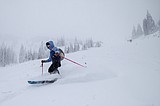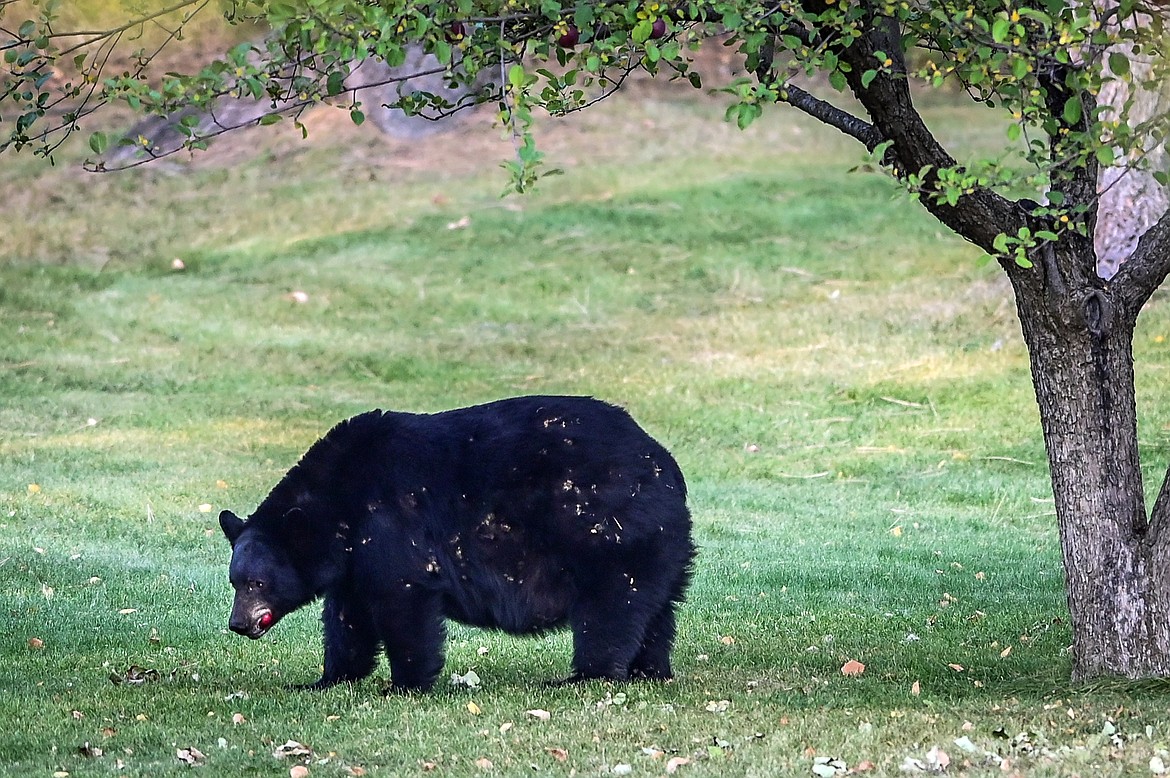Bears reemerge in the Flathead Valley
KATE HESTON | Hagadone News Network | UPDATED 2 years, 8 months AGO
Kate Heston covers politics and natural resources for the Daily Inter Lake. She is a graduate of the University of Iowa's journalism program, previously worked as photo editor at the Daily Iowan and was a News21 fellow in Phoenix. She can be reached at [email protected] or 406-758-4459. | April 5, 2023 12:00 AM
Bears in Northwest Montana didn’t miss a beat as the weather began to warm up — reports of bear sightings continue to come in from across the Flathead Valley.
Black bears emerge before grizzly bears because they typically den in lower elevations, said Dillon Tabish, Montana Fish, Wildlife and Parks’ regional communication and education program manager.
The wildlife agency, however, does know of one grizzly bear moving around south of Swan Lake.
Black bears have been reported in the Whitefish area and some parts of Kalispell, like Lawrence Park near the Buffalo Hill Golf Course, according to Tabish.
“Bears become more active in April and May, and now is a good time for residents to assess their property and remove any unsecured food attractants,” warned Justine Vallieres, Montana Fish, Wildlife and Parks regional wildlife conflict specialist, in a press release.
Tabish urged residents to remain bear aware and report sightings to the wildlife agency immediately. The best way to avoid conflicts with bruins is to secure or remove any attractants, he said.
“If we can try and get to it quickly and address the problem ... that proves to be much more effective than if the bear becomes food conditioned,” Tabish told the Inter Lake.
As bears come to lower elevations, Tabish said, they look for food and can be lured to improperly stored trash, bird feeders and small livestock, such as a chicken coop. Bears that become reliant on human sources for food can face euthanasia.
Tabish urged residents to take bird feeders inside and keep trash locked up.
According to the wildlife agency, avoiding a bear conflict is preferential to dealing with one. Steps to take include: owning and knowing how to use bear spray, never feeding wildlife, keeping a safe distance, securing trash or food in a bear resistant container, making loud noises when near a bear and using properly constructed electrified fences, specifically around livestock.
Securing trash is an important step in reducing human conflicts with bears. The Whitefish City Council last year adopted a citywide ordinance requiring bear resistant garbage containers at all residential properties. The containers must be fully latched and cannot be overflowing.
Bear encounters and conflicts should be reported immediately. In Northwest Montana, there are different contacts for different regions. For the northern part of Flathead County and Eureka area, call Justine Vallieres at (406) 250-1265. For the southern part of the county, call Erik Wenum at (406) 250-0062. For the Cabinet-Yaak ecosystem and Sanders County, call Kim Annis at (406) 291-1320. For the Flathead Indian Reservation, call the Confederated Salish and Kootenai Tribes Wildlife Management Program.
Montana Fish, Wildlife and Parks is hosting a few upcoming events with presentations on bear safety.
On April 5, Whitefish Legacy Partners is hosting a “Bear Aware” presentation at the Alpine Theatre Project Studios at 6475 U.S. 93 South in Whitefish at 6:30 p.m. To register for the free event, visit www.whitefishlegacy.org.
Also on April 5, Swan Valley Connections will host the “Spring Bear Social Community Potluck and Presentation.” It begins at 5:30 p.m. at the Swan Valley Community Hall. For more information, visit www.swanvalleyconnections.org.
Lastly, state wildlife agency employees will be presenting on bear safety and management at Bias Brewing on April 20 at 6:30 p.m. at Bias Brewing in Kalispell, 412 S. Main St. To register for this event, visit www.whitefishlegacy.org.
Reporter Kate Heston can be reached at [email protected] or 758-4459.
ARTICLES BY KATE HESTON

Veteran-owned mobile boat repair service anchors down in the Flathead Valley
The Kramers launched Flathead Mobile Marine to use their skills — they have decades of experience performing routine maintenance checks on a variety of boats as well as working with engines and electrical systems — and help boaters in the community.

With ski season near, resort reaches deal with staff
After 18 months of negotiations, Whitefish Mountain Resort executives and the resort’s ski patrol union are finalizing a one-year contract for the upcoming season.

Trapped in a car wreck, Woods Bay woman credits teens with saving her life
Driving home from a quilting event in Bigfork in September of last year, Carol Martin remembered that the sky was clear, the sun was shining, and she had a headache.

